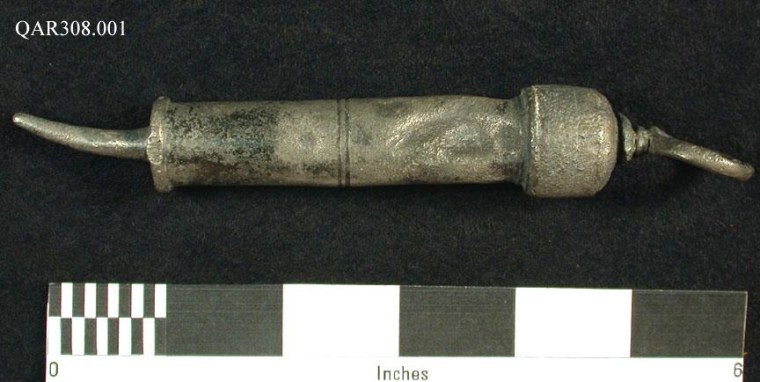Archaeologists are excavating the vessel that served as the flagship of the pirate Blackbeard, and the medical equipment they have recovered from the shipwreck suggests the notorious buccaneer had to toil to keep his crew healthy.
Blackbeard is the most famous pirate who ever lived. His real name was Edward Teach (or possibly Thatch), and his flagship, the Queen Anne's Revenge, was formerly a French slave vessel named La Concorde de Nantes that Blackbeard captured in November 1717. Blackbeard was able to capture this ship easily because much of its crew was either sick or dead due to disease.
A few months into 1718, the Queen Anne's Revenge ran aground on a sandbar at Topsail Inlet in North Carolina. Blackbeard abandoned much of his crew at that point, leaving the site with a select group of men and most of the plunder. He was killed in battle later that year.

The wreck of the Queen Anne's Revenge was rediscovered in 1996 and has been under excavation by the Queen Anne's Revenge Project. Archaeologists have recovered many artifacts, including a number of medical instruments. These artifacts, combined with historical records, paint a picture of a pirate captain who tried to keep his crew in fighting shape.
"Treating the sick and injured of a sea-bound community on shipboard was challenging in the best of times," Linda Carnes-McNaughton, an archaeologist and curator with the Department of Defense who volunteers her time on the excavation project, wrote in a paper she presented recently at the Society for Historical Archaeology annual meeting. [Photos: The Medical Instruments Found on Blackbeard's Ship]
The people on a ship like Blackbeard's would have had to contend with many conditions, including "chronic and periodic illnesses, wounds, amputations, toothaches, burns and other indescribable maladies," Carnes-McNaughton said.
In fact, maintaining the crew's health was so important that when Blackbeard turned the Queen Anne's Revenge into his flagship, he released most of the French crew members he had captured, but he forced the ship's three surgeons to stay, along with a few other specialized workers like carpenters and the cook, Carnes-McNaughton said.
When archaeologists excavated the Queen Anne's Revenge they found a number of medical instruments, some with marks that indicate they were manufactured in France. Carnes-McNaughton said Blackbeard likely captured this equipment when he captured the surgeons. [The 7 Most Mysterious Archaeological Finds on Earth]
Among the finds was a urethral syringe that chemical analysis indicates originally contained mercury. Carnes-McNaughton told Live Science that this would have been used to treat syphilis, a sexually transmitted disease. "Eventually the mercury kills you," she said, explaining that the patient could suffer mercury poisoning.
— Owen Jarus, Live Science contributor
This is a condensed version of a report from Live Science. Read the full report. Follow Live Science @livescience, Facebook & Google+.